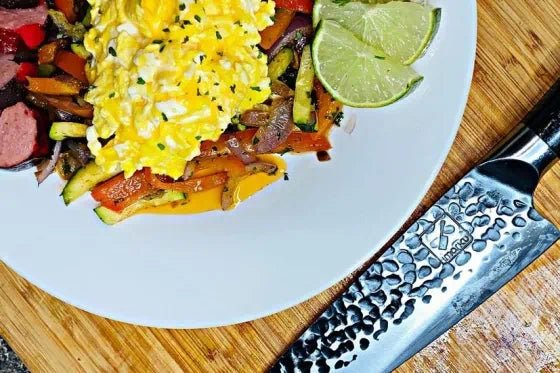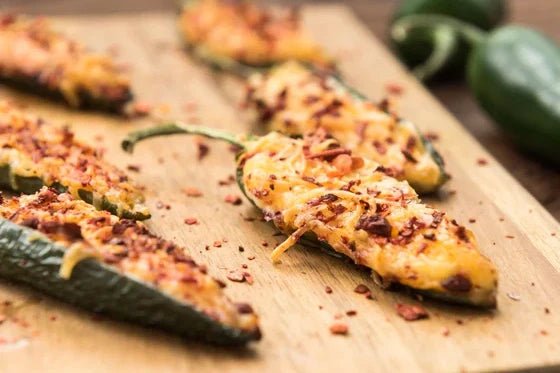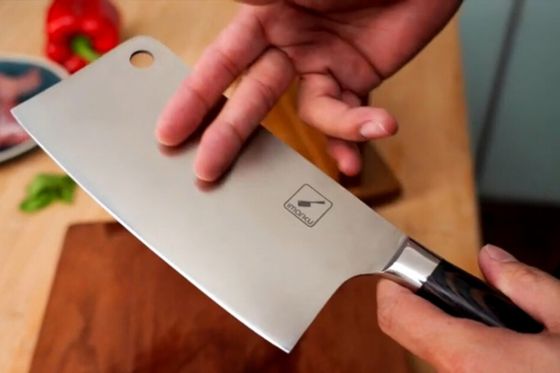TABLE OF CONTENTS
With Japanese knife brands, you can expect nothing but the absolute best. Meticulously crafted using only the finest materials, these knives exude unparalleled quality. The durability and razor-sharp edges of these remarkable Japanese chef knives are renowned worldwide, ensuring that even future generations will continue to rely on their excellence.
In this review, we explore the top 5 best Japanese chef knives, ideal for both professional chefs and home cooks. Whether you are looking for a Japanese kitchen knife for precise slicing or a versatile Japanese knife for various culinary tasks, our guide will help you find the perfect tool.
Are Japanese Chef Knives Worth it?
Japanese knives in 1 word, precision. No doubts. No questions. Short answer, 100% worth it. Compared to your more traditional chef knives that are western-style or what you often see. Japanese knives are much lighter and thinner, reducing hand fatigue, with a sharpness that cannot be easily matched with your more traditionally made knives.
And you know what's worst? For the price, you would think you would get high-caliber knives but most of these western-style knives aren't even that sharp or durable. Most chef knives cost well over $100 some "European-style" knives easily cost over $200. The most "basic" beginner chef knife starts at around $70.
Japanese chef knives are relatively more reasonable at just over or under $50 that's lighter than their European or Western counterparts. At iMarku, we ensure that the Japanese chef knives that you buy are of the highest quality.
However, people who prefer heavy-duty and robust knives might not be as fond of Japanese knives. These knives are known for their delicate craftsmanship and razor-sharp edges, requiring careful handling to maintain their precision.
What Japanese Knives Do Chefs Use?
- Santoku: this is your multipurpose blade used for dicing, slicing, chopping, etc.
- Gyutou: this knife is used for practically everything even smaller boned meat or poultry.
- Deba: this kind of knife is used for filleting fish and also used for cutting poultry or meat with smaller bones.
- Sashimi: this is a delicate knife used for smoothly cutting often producing a refined texture. Perfect for sashimi.
- Petty: this is your precision knife or utility knife where you peel, trim, and slice all kinds of fruits, herbs, and smaller vegetables.
There are 14 different styles of Japanese knives in total. Listed are 5 of the most used knives by chefs, to not overwhelm you as in general, there are 5 main categories that you often cut into i.e. meat, fish, fruits, vegetables, and bones but I'd be very surprised if you buy a Japanese knife and you don't continue to want another after you buy your first one.
Understanding Technical Specifications of Japanese Chef Knives
Japanese chef knives exhibit diverse technical specifications. The length of the handle and blade varies, with sizes typically ranging from 6 to 10 inches. Blade shapes also differ, with options suited for single strokes or rocking motions. Balance is essential, as an overly-heavy handle can lead to wrist fatigue.
The steel's hardness is indicated by the Rockwell Scale of Hardness (HRC), with Japanese knives often using harder steel than European counterparts. This steel type is also prone to holding an edge longer.
Japanese knives can be categorized by styles such as santoku, nakiri, and gyuto, each designed for specific culinary tasks. Maintenance and rust resistance are key factors to consider. Overall, these knives reflect a blend of craftsmanship and functionality, making them indispensable tools for chefs.
Top 5 Best Japanese Chef Knives
Global Santoku Knife
Made exclusively with stainless steel, from the handle to the actual blade itself. Global knives stand out compared to other Japanese knives due its broader sharp blade: a definite advantage for slicing across the meat.
Priced at $130, this santoku knife gives you that sense of balance and control, as Global Knives incorporated sand in their 'rectangular handle. This knife is well-designed to the point you won't notice the sand at all.

Pros:
- Slimmer bolster promotes better grip and control
- Sand weighted 'handle provides steady use
- Its blade is easy to sharpen with the use of 'whetstone
Cons:
- There is no blade sheath available for this item.
- Not built for big chunky meats
- Some users may feel uncomfortable when handling its rectangular-shaped handle.
- Utilizing this knife repeatedly lessens the blade's sharpness.
Shun 8" Chef's Knife
Shun is a brand known for their steady, well-crafted knives. With an 8-inch sharp blade and a comfortable handle. Priced at $200, it makes slicing, cutting, dicing, and chopping vegetables look effortless.
This knife also has hollows that make sure your food won't get stuck in the blade while you use this. Its wide handle fits well on your hands and is comfortable to use, thanks to its broad, curved grip. The only issue you may have is its handle's weight distribution and no knife cover.

Pros:
- Its Damascus Steel blade is layered and good for aesthetics
- The handle feels comfortable to grasp
- Thin but solid-built
Cons:
- This is not for all users given its wooden, weighted handle.
- No sheath included.
Miyabi Chef's Knife
Miyabi's Birchwood Chef's knife is remarkable for its high-caliber blade that is made from a hundred-layered, two varieties of steel.
This, in turn, enhances its blade's sharpness which helps it to last for a long period of time ("Edge retention"). Starting at $290, the unfinished 'rough wood feel and top area of the handle can be quite hard to handle and uncomfortable for some users.

Pros:
- A durable blade that retains its sharpness over time
- Aesthetically designed handle
- Light-weight
Cons:
- Expensive
- Rough handle feel
Mac's Chef Knife
Mac's chef knife i.e. the Mac MTH-80 allows its users to cut vegetables with ease. Priced at $145, its dimpled-thin blade minimizes friction as you cut juicy vegetables, in turn, allowing you to make a clean cut without the sticking part.
This knife is perfect for people who don't like heavy-feel knives and can be used by left or right-handed users. They should be cleaned and dried after use to prevent rusting.

Pros:
- Its razor sharpness doesn't deteriorate easily
- Easy to sharpen
- Easy to use
Cons:
- Not good for cutting bulky food items and meat
- Prone to rust if not washed and dried right after use ("High Maintenance")
imarku Japanese Hammered Design Chef's Knife
Priced at just $39.99. This Japanese all-rounder knife with a hammered design ensures you that each and every single cut that you is do is smooth, without any hanging bits or pieces on your knife. Favored by beginners and chefs alike for its sharpness and accuracy when cutting, slicing, and dicing.
The blade's edge is tempered under cold and hot temperatures which ensures its sharpness despite repetitive use. Above all, the design incorporates comfort as a primary feature. You can feel it from the handle that reduces fatigue, to the lightness and sharpness of the blade that makes it seamless as you cut and slice away.

imarku 8" Chef's Knife
Pros:
- Solid built
- Can even be used as a sushi knife
- The handle does not slip easily.
- Perfect for people with smaller hands
- Lifetime Guarantee
Cons:
- May be uncomfortable for short-handed users due to its long handle
iMarku Complete Japanese Knife Set
Best of all, iMarku offers you a complete set. I mean, why settle for just 1 knife when you can have your very own set? High-quality Japanese knives, with all the perks of precision and durability at such a phenomenal value, at just $189.
Imarku offers a set of knives perfect for any occasion. Be it beginner-level or professional use, our knives are designed with ease of use and any event in mind. Inclusive in this set are Chef's Knife, Paring Knife, Bread Knife, and Knife Sharpener. You don't need to look elsewhere if you buy this set!

- 8" Chef Knife can be used to prepare any meal, be it slicing, chopping, dicing, or mincing your meat or vegetables. This is a favorite among chefs and hobby cooks.
- 3.5" Paring Knife is razor-sharp, perfect for paring any fruits or vegetables you will use in your recipe.
- 10" Bread knife is perfect for any type of bread. You can slice your bread according to any size with this knife.
- Easy to use, knife Sharpener to restore and repair all your Japanese knives in the comforts and warmth of your home.
Frequently Asked Questions
Q: What Is The Most Popular Chef Knife Size?
A: An 8-inch Gyutou knife is the place to start. It is the eastern version of your typical western chef knife meaning an all-rounder except it's lighter and sharper. The Santoku knife known as the three virtues is the second most popular as it can cut fish, vegetables, and meat.
Q: What should I avoid cutting with a Japanese knife?
A: Cutting into cans, oyster openers, frozen foods, bones, shells, nuts, hard candies, seeds, stems, and cheeses with hard rinds (e.g. parmesan). Please remember this simple rule, if you won't chew it with your teeth then you shouldn't your Japanese knife on it.
Pro Tip: never ever. . .
- Put your Japanese knives in your dishwasher.
- Always wipe down after using especially when handling acidic foods.
- Never pry, twist, torque, or scrap on a board. Your knife is meant to go straight forward and backward as smoothly as possible without any additional force or horizontal or lateral movements.
Q: How to prolong Japanese chef knife life span?
A: There are 6 tips.
Cleaning: After use, promptly clean the knife with warm water and mild detergent. Avoid aggressive scrubbing.
Drying: Thoroughly dry the knife to prevent water stains or rust formation.
Storage: Keep knives in blade protectors,magnetic strips or knife set block to prevent contact and damage.
Handwashing: Avoid dishwashers to prevent the knife from coming into contact with other objects.
Sharpening: Regularly hone the blade using a honing rod to maintain sharpness.
Cutting Surfaces: Use soft cutting boards like wood or plastic to minimize impact on the blade's edge.
Final Thoughts
Listen, without question, Japanese knives are just phenomenal. No western-style knife, no blade can compete with the lightness, thinness, and absolute sharpness that a well-made Japanese knife has. The precision alone is worth it.
If this is your very first time purchasing a Japanese knife. Buy the imarku's chef knife. It's the perfect all-rounder knife for you. This a phenomenal introduction to the world of Japanese knives with a promise that your Japanese knife will last you a lifetime so long as you take care of them like they're your best friend.
Pro Tips:
- A golden rule when it comes to Japanese knives is, you would never ever give your knife away to anybody to be sharpened. You must do it yourself.
- Make sure you soak the stones in water for 30 minutes. These stones aren't oil stones. You only sharpen Japanese knives with wet stones. If you use any kind of sharpening wheel will shave off too much of your knife.
- Use a knife roll, sharpening stones, and a saya which is a knife cover often made with magnolia wood.
- Never forget. Always wipe down after use. Always.






















Leave a comment
All comments are moderated before being published.
This site is protected by hCaptcha and the hCaptcha Privacy Policy and Terms of Service apply.